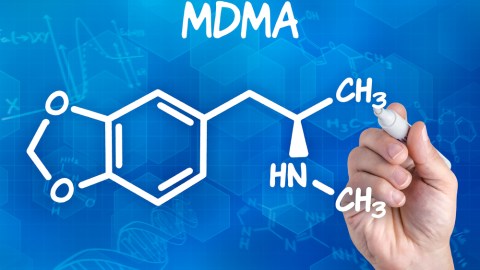Why MDMA Makes You Feel Good (and Then Really Bad)

About a year ago, MDMA (a.k.a. Molly) was the flavor of the week among the “think of the children!” crowd after impure strains of the drug caused a string of hospitalizations and deaths across the eastern United States. In theory, Molly is supposed to be straight MDMA without any additives (unlike ecstasy, which is often laced with caffeine or some sort of amphetamine). In reality, sometimes naive users end up ingesting more chemicals than they bargained for.
Some of you may be asking why people choose to use MDMA in the first place? How does it work? What are the after-effects. Luckily, the folks over at AsapSCIENCE (embedded below) have created a useful video detailing how MDMA triggers the release of massive amounts of serotonin in your brain. Serotonin is the chemical associated with gleeful feelings such as falling in love or winning a championship. Imagine feeling that sort of happiness for 3-8 hours and you can picture what MDMA is like.
One major problem is that MDMA can temporarily exhaust one’s ability to produce pleasurable chemicals, so that when a user’s body returns to “normalcy” he or she is sometimes left with a depressing, lethargic hangover. Some research suggests that continued use of the drug can destroy the ends of brain cells and even lead to lasting brain damage. Still, MDMA has been considered as a possible treatment for conditions such as chronic depression and PTSD.
Watch the video below to learn more:
Learn more at YouTube and The New Yorker
Photo credit: Zerbor / Shutterstock





